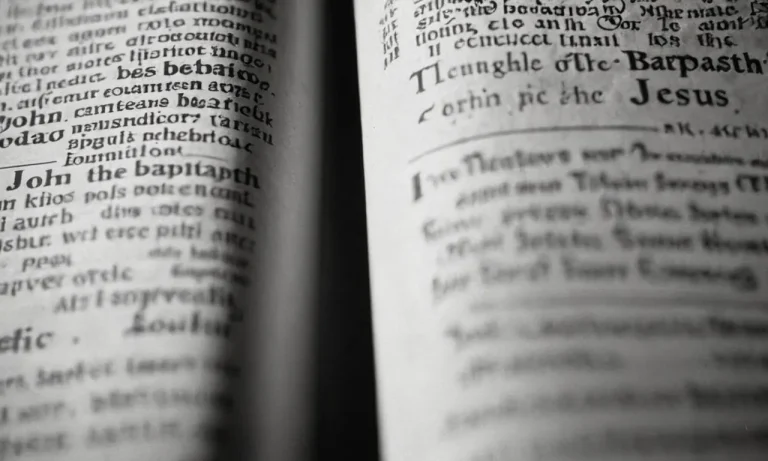Comprehensive Guide To Understanding The Meaning Of ‘Cmu Wall’
In the realm of construction and architecture, the term ‘CMU Wall’ is a common phrase that often leaves many scratching their heads. Whether you’re a homeowner, contractor, or simply someone curious about the intricacies of building materials, understanding the meaning behind this term can be invaluable.
If you’re short on time, here’s a quick answer to your question: A CMU Wall refers to a wall constructed using Concrete Masonry Units, commonly known as concrete blocks or concrete bricks.
In this comprehensive guide, we’ll delve into the depths of what a CMU Wall is, its components, advantages, and applications. We’ll explore the history behind this construction method, the different types of CMU Walls, and the factors that make them a popular choice in various building projects.
Additionally, we’ll provide insights into the installation process, maintenance requirements, and potential challenges associated with CMU Walls.
What is a CMU Wall?
A CMU wall, or Concrete Masonry Unit wall, is a type of construction that utilizes interlocking concrete blocks, also known as concrete masonry units (CMUs). These walls are renowned for their exceptional durability, fire resistance, and versatility, making them a popular choice in various construction projects.
Definition of CMU (Concrete Masonry Unit)
A Concrete Masonry Unit (CMU) is a precast, hollow concrete block used for constructing walls, foundations, and other structural elements. These units are typically made from a mixture of Portland cement, lightweight aggregates, and water.
The hollow cores within the blocks allow for the insertion of steel reinforcement bars, enhancing the wall’s strength and stability. CMUs are available in various shapes, sizes, and textures, offering architects and builders flexibility in design.
Components of a CMU Wall
- Concrete Masonry Units (CMUs): The primary building blocks of the wall.
- Mortar: A mixture of cement, sand, and water used to bind the CMUs together.
- Reinforcement: Steel bars inserted into the hollow cores of the CMUs for added strength.
- Grout: A fluid mixture of cement, sand, and water poured into the hollow cores to encase the reinforcement bars.
- Wall Ties: Metal connectors that anchor the CMU wall to the structural frame or other building components.
Brief History of CMU Walls
The origins of CMU walls can be traced back to the late 19th century when the first concrete masonry units were patented. However, it wasn’t until the early 20th century that CMU walls gained widespread popularity, particularly in the United States.
According to the National Concrete Masonry Association, the use of CMUs in construction has steadily increased over the years, with an estimated 1.5 billion concrete masonry units manufactured in the U.S. annually.
Today, CMU walls are widely used in residential, commercial, and industrial construction projects, thanks to their durability, fire resistance, and energy efficiency. They have become a staple in modern construction, offering a cost-effective and versatile solution for creating sturdy and long-lasting structures.
With advancements in manufacturing processes and design techniques, CMU walls continue to evolve, making them an increasingly popular choice for builders and architects alike.
Types of CMU Walls
CMU (Concrete Masonry Unit) walls are versatile and widely used in construction projects, offering a range of options to suit different structural and insulation requirements. Here are the main types of CMU walls:
Load-Bearing CMU Walls
Load-bearing CMU walls are designed to support the weight of the structure above them, making them a crucial component in buildings. These walls are typically thicker and reinforced with steel bars to enhance their load-bearing capacity.
Load-bearing CMU walls are commonly used in multi-story buildings, as they can withstand the immense weight of floors and roofs. According to Concrete Construction, proper design and construction techniques are essential to ensure the structural integrity of load-bearing CMU walls.
Non-Load-Bearing CMU Walls
Non-load-bearing CMU walls, also known as partition walls, are primarily used for dividing spaces and creating rooms within a building. They do not bear the weight of the structure above them, making them lighter and less reinforced than load-bearing walls.
Non-load-bearing CMU walls are often used for interior walls, office partitions, and exterior fences or barriers. They provide privacy, sound insulation, and fire resistance, making them a popular choice in residential and commercial construction. 😊
Reinforced CMU Walls
Reinforced CMU walls incorporate steel reinforcement bars (rebar) within the hollow cores of the CMU blocks. This reinforcement enhances the wall’s strength, durability, and resistance to lateral forces, such as wind loads and seismic activity.
Reinforced CMU walls are commonly used in areas prone to earthquakes or high winds, as well as in load-bearing applications. According to Masonry Advisory Council, proper reinforcement and grouting techniques are crucial for ensuring the structural integrity of reinforced CMU walls.
Insulated CMU Walls
Insulated CMU walls are designed to provide improved thermal insulation and energy efficiency. These walls incorporate insulation materials, such as rigid foam boards or loose-fill insulation, within the hollow cores of the CMU blocks.
Insulated CMU walls help regulate indoor temperatures, reducing energy consumption and utility costs. They are often used in buildings where energy efficiency is a priority, such as residential homes, offices, and schools.
According to the U.S. Department of Energy, insulated CMU walls can provide R-values (thermal resistance) ranging from R-6 to R-20, depending on the type and amount of insulation used.
Advantages of CMU Walls
Concrete Masonry Unit (CMU) walls, also known as concrete block walls, offer an impressive array of benefits that make them a popular choice in various construction projects. These sturdy walls have stood the test of time and continue to be a preferred option for homeowners, builders, and architects alike.
Let’s delve into the remarkable advantages of CMU walls:
Durability and Strength
One of the most significant advantages of CMU walls is their exceptional durability and strength. Made from a combination of cement, water, and aggregates, these walls can withstand harsh weather conditions, seismic activities, and even extreme temperatures.
According to the National Concrete Masonry Association, CMU walls have a compressive strength ranging from 1,000 to 3,000 psi, making them incredibly robust and long-lasting. 😃 With proper maintenance, CMU walls can last for decades, providing a reliable and sturdy structure for your home or building.
Fire Resistance
CMU walls are renowned for their excellent fire resistance properties. Concrete is a non-combustible material, which means it doesn’t contribute to the spread of fire. In fact, the Masonry Advisory Council states that CMU walls have a fire resistance rating of up to four hours, depending on their thickness and construction method.
This exceptional fire resistance not only enhances safety but can also lead to lower insurance premiums for your property. 🔥
Sound Insulation
If you’re looking for a quieter living or working environment, CMU walls are an excellent choice. Their dense and solid construction provides outstanding sound insulation, effectively reducing noise transmission from outside sources.
This makes CMU walls ideal for homes near busy streets, airports, or industrial areas, as well as for recording studios, theaters, and other noise-sensitive spaces. According to NCMA, an 8-inch CMU wall can achieve a Sound Transmission Class (STC) rating of up to 50, ensuring a peaceful and tranquil environment.
🎧
Low Maintenance
CMU walls are incredibly low-maintenance, making them a cost-effective and convenient choice in the long run. Unlike other wall materials that require frequent painting, staining, or sealing, CMU walls only need occasional cleaning to maintain their pristine appearance.
They are resistant to termites, rot, and mold, further reducing the need for costly repairs or replacements. With their durability and longevity, CMU walls can provide a hassle-free solution for homeowners and building managers alike. 👏
Versatility in Design
Despite their rugged and sturdy nature, CMU walls offer versatility in design that can complement a wide range of architectural styles. These walls can be finished with various textures, colors, and patterns, allowing for creative and aesthetically pleasing designs.
From sleek and modern to rustic and traditional, CMU walls can adapt to any desired look. Additionally, they can be combined with other materials like wood, stone, or glass to create unique and visually striking structures.
With their versatility, CMU walls provide an excellent canvas for architects and designers to showcase their creativity and bring their visions to life.
Applications of CMU Walls
CMU (Concrete Masonry Unit) walls have a wide range of applications across various sectors, thanks to their durability, versatility, and cost-effectiveness. These walls are constructed using interlocking concrete blocks, which can be reinforced with steel or grout for added strength.
Let’s explore some of the key applications of CMU walls:
Residential Construction
CMU walls are increasingly popular in residential construction due to their fire resistance, energy efficiency, and low maintenance requirements. They are commonly used for load-bearing walls, basements, and foundations.
According to a study by the National Concrete Masonry Association, over 25% of new single-family homes in the United States are built with CMU walls, providing homeowners with a safe and long-lasting structure. 😊
Commercial Buildings
The strength and durability of CMU walls make them an excellent choice for commercial buildings, such as office complexes, retail spaces, and hotels. These walls can withstand heavy loads, making them suitable for multi-story structures.
Additionally, their thermal mass properties contribute to energy efficiency, reducing heating and cooling costs. Can’t beat that, can you? 👏
Industrial Facilities
In industrial settings, CMU walls are commonly used for warehouses, manufacturing plants, and storage facilities. Their fire resistance and low maintenance requirements make them an ideal choice for these environments.
Furthermore, CMU walls can be reinforced to withstand heavy machinery and equipment loads, ensuring the safety and longevity of the structure.
Retaining Walls
CMU walls are widely used for retaining walls, which are structures designed to hold back soil or other materials on sloped terrain. Their strength and durability make them suitable for this application, preventing erosion and providing stability to the surrounding landscape.
These walls are often seen in residential and commercial settings, as well as along highways and other infrastructure projects.
Sound Barrier Walls
The dense and solid nature of CMU walls makes them effective at reducing noise pollution. Sound barrier walls constructed with CMUs are commonly found along highways, airports, and other areas where noise mitigation is essential.
These walls can significantly improve the quality of life for residents and businesses in nearby areas by reducing the impact of unwanted noise. According to data from the Federal Highway Administration, CMU sound barrier walls can achieve a noise reduction of up to 10-15 decibels, which is quite amazing!
😍
With their versatility and proven performance, CMU walls continue to be a popular choice across various sectors, offering builders and homeowners a reliable and cost-effective solution for their construction needs.
Installation and Maintenance of CMU Walls
Site Preparation and Foundation
Before embarking on the construction of a CMU (Concrete Masonry Unit) wall, proper site preparation and foundation work are crucial. The area should be cleared of any debris, vegetation, or obstacles that might interfere with the installation process.
Next, the foundation must be laid, typically consisting of a concrete footing or a reinforced concrete slab. This foundation ensures the stability and longevity of the CMU wall, as it distributes the weight evenly and prevents settling or cracking.
According to The Masonry Society, a well-designed and properly constructed foundation is essential for CMU walls to withstand various loads and environmental conditions.
Laying CMU Blocks
Once the foundation is in place, the process of laying the CMU blocks begins. These blocks, often made of concrete or lightweight materials, are stacked in a running bond pattern using mortar as the binding agent.
Each course (row) of blocks is carefully leveled and aligned to ensure a straight and plumb wall. It’s essential to follow the manufacturer’s guidelines and industry best practices, such as maintaining proper mortar joint thickness and allowing for adequate curing time between courses.
According to National Concrete Masonry Association, the precision in laying CMU blocks can significantly impact the wall’s structural integrity and aesthetic appeal.
Reinforcement and Grouting
Depending on the wall’s intended use and local building codes, reinforcement and grouting may be necessary. Vertical reinforcement bars (rebar) are inserted into the hollow cores of the CMU blocks at specified intervals, and these cores are then filled with a grout mixture.
This process enhances the wall’s strength and resistance to lateral loads, such as wind or seismic activity. According to a study by American Concrete Institute, properly reinforced and grouted CMU walls can have a compressive strength of up to 3,000 psi (20.7 MPa), making them suitable for load-bearing applications.
Finishing and Waterproofing
Once the CMU wall is constructed, various finishing options are available to enhance its appearance and protect it from the elements. Common finishes include stucco, brick veneer, or decorative masonry coatings.
Waterproofing measures, such as applying a water-repellent sealer or installing a drainage system, are also recommended to prevent moisture infiltration and extend the wall’s lifespan. According to Brick Veneer Institute of America, a properly finished and waterproofed CMU wall can last for decades with minimal maintenance.
Regular Maintenance and Repairs
Like any other building component, CMU walls require regular maintenance and occasional repairs to ensure their longevity and structural integrity. Periodic inspections should be conducted to identify any cracks, spalling, or other signs of deterioration.
Prompt repairs, such as repointing mortar joints or sealing cracks, can prevent further damage and extend the wall’s service life. Additionally, it’s essential to address any moisture issues, as prolonged exposure to water can lead to mold growth, efflorescence, or even structural failure.
With proper maintenance and timely repairs, a well-constructed CMU wall can provide reliable service for many years. According to National Association of Home Builders, regular maintenance can extend the lifespan of a CMU wall by up to 50%.
Conclusion
In conclusion, understanding the meaning of ‘CMU Wall’ is essential for anyone involved in the construction industry or interested in building materials. These walls, constructed using Concrete Masonry Units, offer a range of benefits, including durability, fire resistance, sound insulation, and versatility in design.
Whether you’re building a residential home, commercial structure, or industrial facility, CMU Walls can be an excellent choice, providing strength and longevity to your project. With proper installation, reinforcement, and maintenance, these walls can withstand the test of time and serve as a reliable foundation for your building endeavors.
By exploring the various types, advantages, applications, and installation processes of CMU Walls, this comprehensive guide has aimed to equip you with the knowledge necessary to make informed decisions and appreciate the significance of this construction method in the ever-evolving world of architecture and building.








